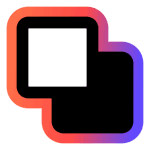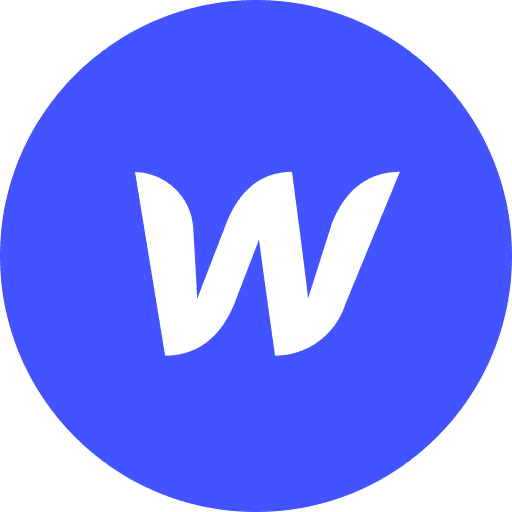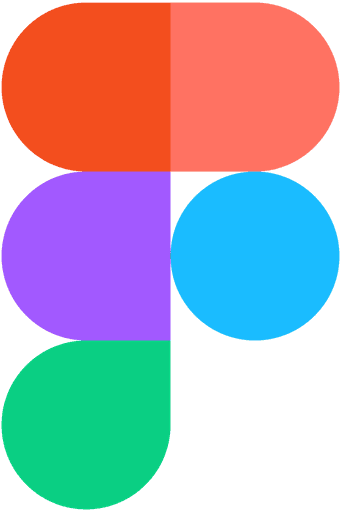In a world where communication happens faster than our thoughts, finding the confidence to express ourselves has quietly become one of the biggest modern challenges. Countless individuals know what they want to say, yet hesitate at the moment they need their voice the most.
TheConfidento exists to change that.
Starting with a Thank You
I appreciate you taking the time to review this case study. I chose this example because I feel it demonstrates:
My ability to create creative and elegant solutions to technical problems
My ability to design beyond the typical screen
My ability to effectively collaborate with both internal and external partners
Concept
Design System
Role
Product Design
6 weeks
Goal
The goal was to create a centralized system where users could learn, practice, track progress, and build confidence through small, repeatable actions. Instead of overwhelming learners with long modules, TheConfidento focuses on bite-sized progression, progress visibility, and autonomous exploration.
Key Responsibilities:
UX Researcher
UX/UI Designer
Design System Architect
Wireframing & UI Design
Visual System Creation
Prototype & Interaction Design
Design for Dark Mode
25%
User Retention
18%
Increase in average time spent
35%
Improvement in task completion
Project Roadmap
Problem Statement
Many people struggle to express themselves confidently despite having valuable thoughts and ideas. TheConfidento seeks to solve this by helping users build public speaking abilities and social confidence through structured learning, practice tracking, and motivation tools.
User Survey & How It Shaped Our Navigation Model
To understand how people actually feel about speaking up, I ran a survey with 71 respondents across students and working professionals.
The goal was to learn:
How confident they feel when speaking in front of others
How often they avoid speaking even when they have ideas
Whether they’re actively trying to improve
What motivates them to keep practicing
50%
Are college going students
58.8%
Hold back from speaking
73%
Want to invest at least 1 hour to improve their communication skill
User Persona
After analysing the survey, we divided our target users into 3 Primary categories: Working Professionals, College students, and School-going student. For each category, we had a conversation with multiple individuals and collectively created the following User Personas
School-going students
Competitive Analysis
Existing tools often:
Focus on “courses” but not motivation systems
Lack a clear learning system
Overwhelm users with long modules
Fail to communicate safety, privacy, or trust
Lack personalized, self-paced journeys
Opportunity Identified:
A seamless, modular, progress-driven communication learning app that feels safe, enjoyable, and achievable.
Empathy Mapping
Says: “I want to improve—but I don’t know where to start.”
Thinks: “What if I sound bad? What if I’m judged?”
Does: Browses courses but hesitates
Feels: Anxious, shy, unconfident but hopeful
To move forward in the ideation phase it was really important to sum things us by creating an empathy map of what exactly our user says, thinks, does, and feels. This gave us a solid foundation to ideate on and start giving shape to the solution to the problems faced.
IDEATE
Information Architecture
The entire experience was mapped into 6 core buckets:
Home (Progress + Recommendations)
Courses (Structure, Lessons, AI feedback roadmap)
Trackers (Daily learning + consistency streaks)
Practice (Playback, prompts, reflection—future phase)
Search & Explore
Profile / Settings / Enable/Disable Dark Mode
Whiteboarding & Sketches
Collaborative explorations helped evolve the direction from:
Linear onboarding →
Hub-and-Spoke modular model for returning users
This made the experience more flexible, less overwhelming, and far more personalized.
Early sketches explored:
Card layouts
Modular lesson blocks
Progress meters
Streak-based learning motivators
Trust-building banners (e.g., secure payments)
The survey data made one thing very clear:
people are motivated, but they are also easily distracted, have scattered productivity peaks, and struggle to maintain habits consistently.
This directly shaped how I approached navigation for TheConfidento.
Because most users get distracted “from time to time” or “often”, a long, rigid onboarding flow risked drop-off.
Because productivity is split between early morning, evening, and night, learners needed the freedom to re-enter the product from different points depending on their energy and time.
Because 53.5% want to track habits but find it difficult, the app needed to feel like a flexible “hub” rather than a linear checklist that punishes inconsistency.
Why Step-by-Step?
For first-time users, I chose a Step-by-Step flow to:
Reduce cognitive load in the first session
Introduce only the essentials: profile, goals, starting course
Build trust before asking for deeper commitments (like payments or advanced modules)
This guided path ensured new users didn’t feel lost in a complex ecosystem on day one.
Why Hub-and-Spoke?
For returning users, I shifted to a Hub-and-Spoke model, where:
The home screen became a central hub showing progress, streaks, and recommended next actions
Each “spoke” led to a focused area: Courses, Practice, Tracker, Profile
Users could resume where they left off, rather than replaying onboarding steps
This directly supported the behaviors revealed in the survey:
short windows of focus, varying times of day, and a strong desire to see progress without being forced into a single linear path.
In other words,
Step-by-Step lowered the barrier to entry.
Hub-and-Spoke sustained engagement over time.
Paper Sketches
Side by side, we also ideated out things on Zoom meetings and made notes of things that made sense and contributed towards the solution that we were aiming to provide.
Low Fidelity Wireframes
Once the Ideation was complete we were all set to create Low-Fidelity wireframes, which will give an initial structure to the application, and on the basis of that, we can start testing and taking feedback.
User Feedback and Rectifications
After the completion of low-fidelity wireframes, we organised feedback sessions with multiple users and noted down the problems that they faced while navigating through the low-fidelity test prototype. We curated all the problems and rectified the the ones that will reduce the pain points and improve the flow of the application.
Feedback
Rectification
"The learning dashboard feels a bit overwhelming for new users, especially those who struggle with confidence. With so many options visible at once, users weren’t always sure where to start or what to do next."
"Based on this feedback, we redesigned the dashboard into a more structured, modular layout, giving users a clear next step through progress indicators and simplified task cards."
Style Guide
The aesthetics of The Confidento were designed to make users feel supported and motivated as they build confidence. We chose a vibrant gradient of purples, blues, and pinks to create an uplifting, modern atmosphere that reduces anxiety and encourages exploration. A clean, rounded sans-serif typeface adds warmth and readability across light and dark modes. Together, these visual choices create a friendly, inspiring environment that helps users feel safe and empowered throughout their learning journey.
High Fidelity
After successfully completing all the previous steps it was time to give life to our low-fidelity wireframes by adding colors and fonts and components using the material you guidelines.
1. Personalised Dashboard (Home Screen)
Highlights daily progress, learning goals, and course recommendations with cheerful illustrations and a modular layout.
2. Learning Plan & Course Detail
Courses Catalogs are broken into short, trackable segments. Users can see mentors, pricing, lesson structure, and purchase options in a clean, scannable interface.
3. Search bar
Users can choose from over 500+ different courses according to preference, search via tags or name.
4. User Dashboard
Segmented by completed lessons, the interface gives a clear sense of growth. Colour-coded tiles indicate course themes and progress.
5. User Chat Support 24 x 7
Users get chat support by selected three options
1 - Assigned tutor
2 - AI response
3 - User Helpline
6. Profile & Settings + Dark Mode
Minimalist design allowing pwersonalization and privacy control. Designed for clarity with visual hierarchy and icon affordance.
Understanding that learning often occurs in dim lighting (especially late at night), I designed a dark mode using:
Contrast ratios > 4.5:1 for readability
Soft, desaturated backgrounds to reduce eye strain
Highlight colors (blues, purples) retained across both modes for brand consistency
6. Checkout and Payment Process
Minimalist design allowing simple and easy checkout process.
Designing for Safety and Trust
As I designed TheConfidento, I wanted every interaction to feel as safe as the conversations it inspires. Confidence thrives in an environment of trust — and so, beyond aesthetics, I focused on creating an experience that made users feel secure, respected, and in control.
Even though this was a conceptual project, I approached it like a real-world product that would eventually handle sensitive data such as voice recordings, personal goals, and payment information. That meant considering not just how it looks, but how it earns trust.
To achieve that, I integrated visual and verbal cues that reinforced security at every touchpoint. Real-world systems like Stripe and Apple Pay replaced “custom” payment mockups, creating immediate familiarity.
Subtle microcopy
— “Secure checkout powered by Stripe” and “Your progress is safely stored”
— provided reassurance without breaking flow. Visual progress indicators, stable confirmation states, and timestamped uploads helped users feel grounded in a process that was transparent and reliable.
While this project didn’t involve coding, each design choice reflected a mindset that goes beyond the interface — one that values trust, empathy, and ethical responsibility. For me, designing for safety is not just a functional layer; it’s the invisible foundation that allows confidence to grow.
Key Design Decisions
Used Real-World References: Incorporated trusted payment systems like Google Pay and Apple Pay to simulate credible financial flows.
Reassuring Microcopy: Wove in small but powerful lines that subtly communicated security and stability.
Transparent Feedback Loops: Designed progress indicators and confirmation states to continuously reassure users of data safety and task completion.
Design System
Typography: Rounded, accessible sans-serif for a friendly tone
Colors: Youthful and optimistic with high contrast
Components: Reusable UI kit built in Figma with auto layout
Outcome & Next Steps
Usability testing with first batch of learners is planned via Maze
Explore AI-powered speech feedback for future phases
Potential for community-based peer review in upcoming versions
Reflection
This was a quick glimpse of what I did while leading design for this project, reach out to know more about scaling the feature, Design System, use cases, testing insights :)

























